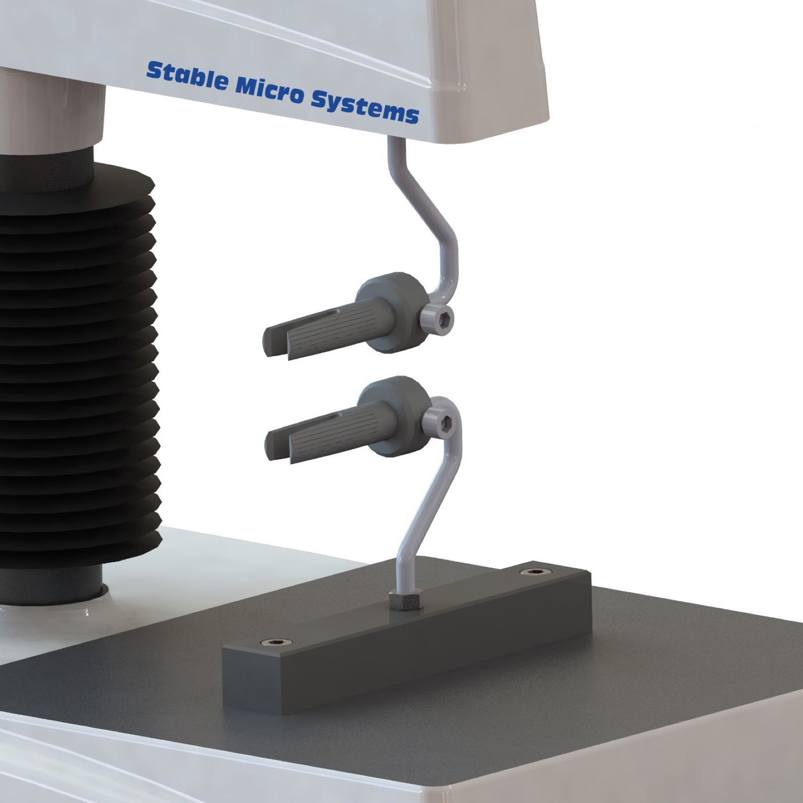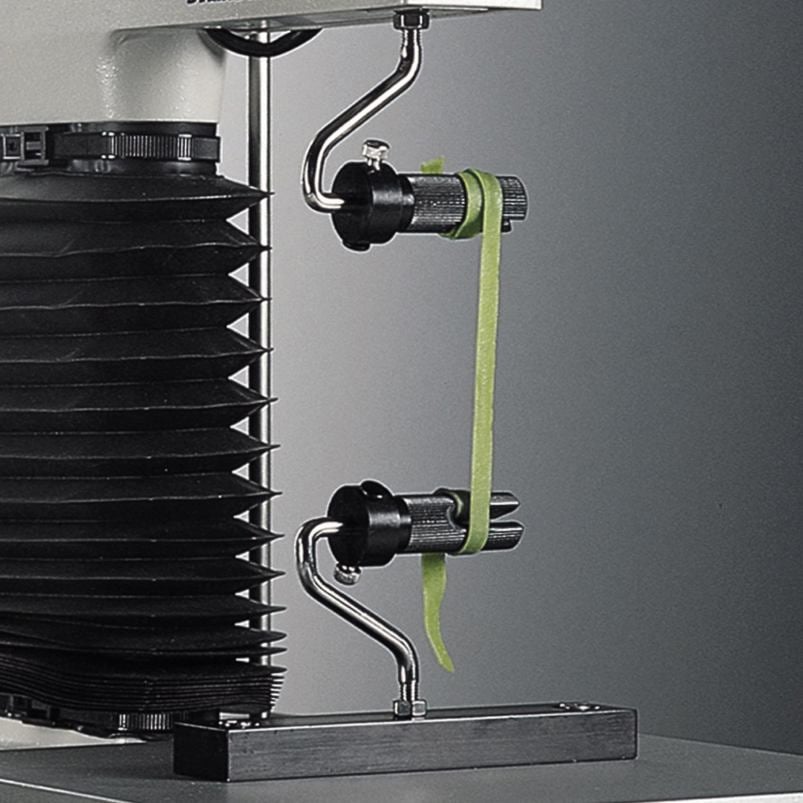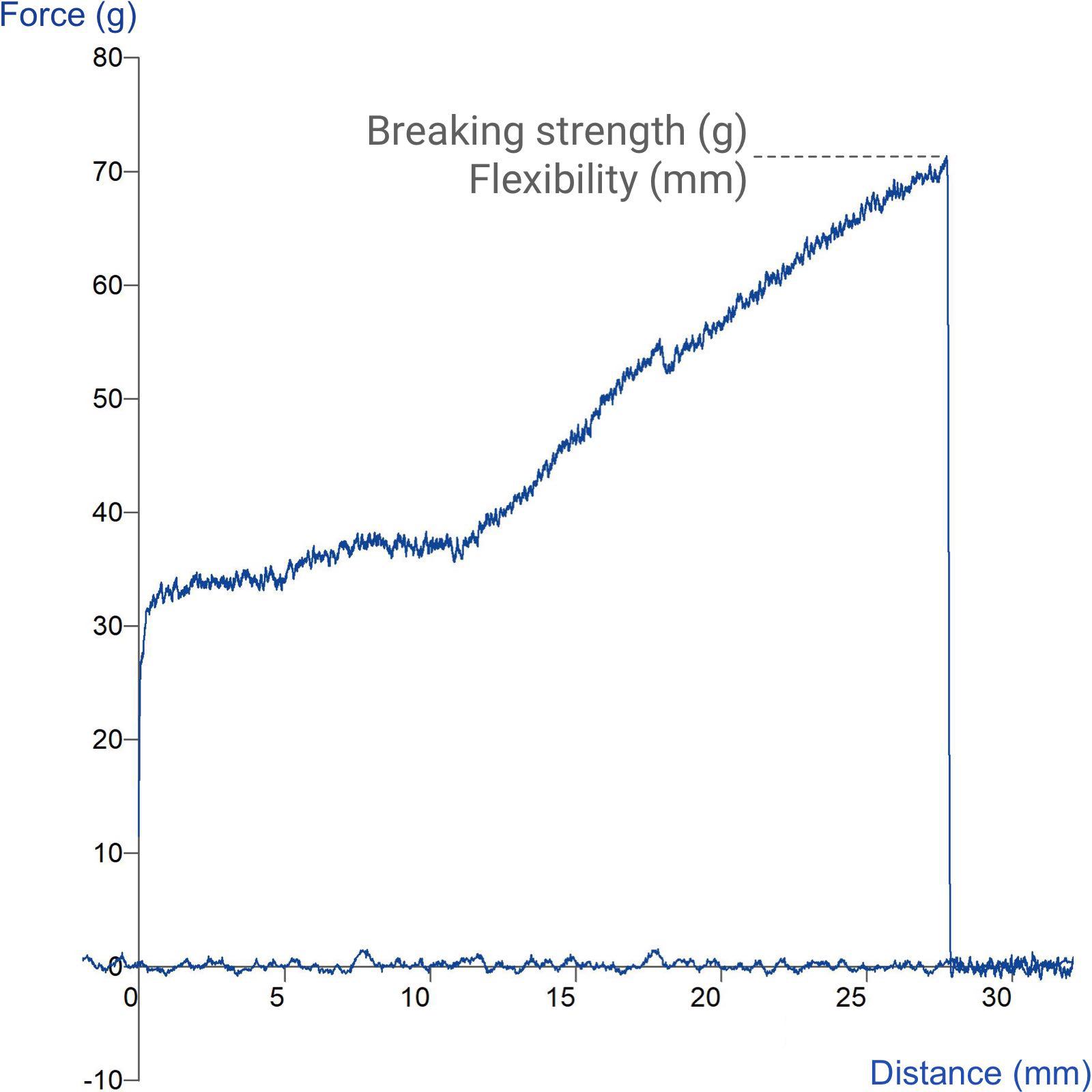Product overview
The measurement of spaghetti tensile strength is important in the food industry for evaluating the quality, cooking behaviour, and texture of pasta products like spaghetti. Tensile strength refers to the force required to break a strand of spaghetti. Measuring this property provides valuable insights into the pasta's cooking performance, structural integrity, and overall consumer experience.
This test for cooked spaghetti or noodles uses a tensile rig which performs tension tests on samples to assess elasticity and breaking strength. These properties are related to the quality and quantity of gluten present in the raw materials and would therefore give another indication as to how a sample holds together upon cooking or when transported, for instance, within a ready meal.
The cooked sample is located through slots and is wound round parallel friction rollers two or three times, to reduce any slippage and also to anchor the sample ends. The rollers ensure that the sample is not split or cut during the test and that the break occurs along the extended region of the sample. The maximum stress value obtained gives an indication of the sample's resistance to break and the 'distance to break' indicates the extensibility of the sample.
This tensile rig is ideally suited to perform break strength and elasticity measurements on both noodle and spaghetti samples. The sample is located through slots in the parallel friction rollers and then wound round two or three times to reduce any slippage and also to anchor the sample ends. The rollers ensure that the sample is not split or cut during the test and that the break occurs along the extended part of the sample.
How does the Spaghetti/Noodle Tensile Rig work?
Ideal sample form
Solid materials which can be mounted on rollers.
Benefits and limitations
- Rolled sample attachment provides means of 'gripping' the sample without cutting.
- Long sample lengths are required for successful sample attachment.
Technical information
Installation
Full installation instructions are provided within the Education Zone of the latest Exponent/Connect software version and on the technical information sheet accompanying this product.
Chemical compatibility
Stable Micro Systems probes and attachments are commonly made from four materials: anodised aluminium (AA6082 T6), stainless steel (316 T), Delrin (acetyl copolymer) and Perspex (polycarbonate).
In general use, probes and attachments made from these materials will be suitable for testing food products and inert non-food materials.
The four materials listed above are not universally resistant to all types of chemicals and as such the compatibility of the probe/attachment material with the product (to be tested) must be established to prevent damage to the probes and attachments. If the compatibility of the product with the probe is unknown to the customer then the chemical information about the product (Material Safety Data Sheet or Product Data Sheet) should be submitted to Stable Micro Systems. Stable Micro Systems will then assess the suitability of the probe/attachment material for use with the product and advise accordingly. If this advice is not sought then Stable Micro Systems will not accept liability for probes/attachments damaged by chemical attack from the product being tested.
Cleaning and maintenance
All probes and attachments may be cleaned in warm (or hand hot) water using a mild detergent. A soft brush may be used but abrasive cleaning aids should be avoided. Stable Micro Systems products should not be microwaved or cleaned in a dishwasher.
Screw threads should be lightly lubricated after drying using a light lubricant, e.g. petroleum jelly, mineral oil. This will aid the fitting and unscrewing of the item. Each component of a probe or attachment should be wrapped separately when stored, to avoid scratching or chipping. This will safeguard against any unnecessary damage to the accessory.



